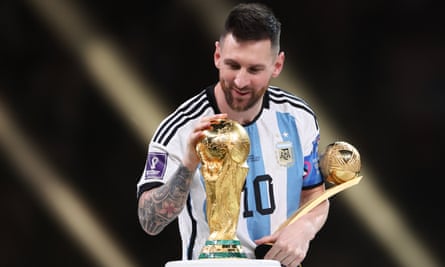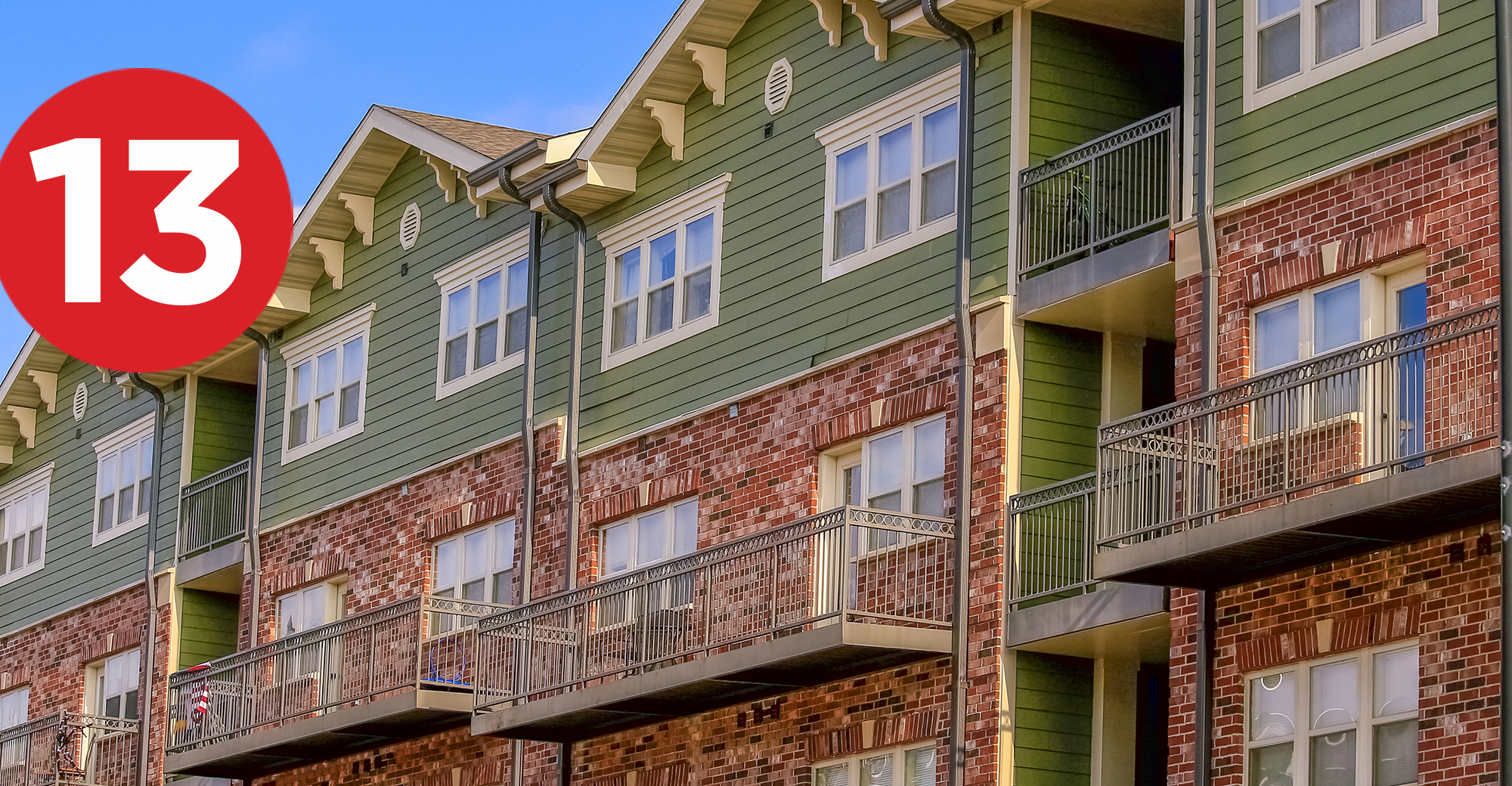Messi to Miami: an MLS masterstroke or Beckham’s biggest gamble? | Inter Miami

While Lionel Messi was busy completing his career odyssey in the most dramatic fashion, David Beckham watched from the stands, hopeful his Inter Miami team could land its very own unicorn.
The Major League Soccer franchise is reportedly “confident” of signing Messi following the 2022-23 European season, and “close” to a deal making him the highest-paid player in MLS history.
Messi to Miami would be earth-shattering: the most significant move in American soccer since Beckham rocked up at LA Galaxy to revolutionize the domestic game 15 years ago. It would elevate Inter Miami from a middling expansion franchise with a famous owner to the league’s biggest draw.
The team has been open in the courtship for years, and Messi calls playing in the MLS a “dream”. Beckham has always promised Miami “a star” and there are none bigger.
“Obviously there’s lots of excitement from the fanbase. When you see Messi and Inter Miami, how could you not be excited?” says Franco Panizo, founder of the Miami Total Football podcast.
“He’s an icon, an idol, and one of the greats of the game. You can argue he’s the greatest of all time. What would this mean for the Latin American community in south Florida? How would they embrace the Messi extravaganza? How would that elevate the game in the area?”
The potential impact for the club and MLS’s global profile is monumental – the game’s biggest name, fresh from a career-capping World Cup win where he was crowned Player of The Tournament – but that doesn’t automatically make it the best move for Inter Miami on the field.
Messi turns 36 next summer and would join MLS mid-season, after playing every minute of Argentina’s grueling World Cup triumph and a full campaign with Qatar-owned Paris Saint-Germain, who may now make a renewed effort to retain the player and further bask in that World Cup glory.
Much like the US men’s national team, MLS has transitioned to an athletic, youth-focused league, shedding the “retirement home” sneers. Older big-name imports have mixed records – for every Beckham and Zlatan, there’s been a flop like Steven Gerrard or Frank Lampard – and Inter itself risks becoming a mere sideshow.
Yet it’s an opportunity the club must seize, according to former USMNT striker Alan Gordon. He played 15 MLS seasons with and against franchise signings like Beckham and Thierry Henry. He says Messi’s impact would be the league’s next great catalyst.
“Messi is the biggest name in the sport and one of the best to ever step foot on a soccer pitch. He’s going to fill stands,” he tells the Guardian.
“Before Beckham came, we travelled ‘Group C’ on Southwest Airlines with LA Galaxy. We’d walk through the airport and either nobody knew us, or nobody cared. When he arrived, we went from playing in front of 10,000, to 60-70,000 people in [American] football stadiums. That’s what it’s going to be like. And guess what? I’d be the first to grab a ticket and take my kids to see Messi.”
The changing face of MLS
The national team’s positive showing at the World Cup may bring new fans to MLS in 2023, with or without an attraction like Messi. Yet fans at domestic games won’t see new Gen-Z stars like US captain Tyler Adams. He and Brenden Aaronson play for Leeds. Christian Pulisic is at Chelsea, Yunus Musah is at Valencia, Weston McKennie plays for Juventus.
Rather than crown Leo Messi its highest-paid player ever, could MLS clubs do more to lure back homegrown talent – like Pulisic, who remains a peripheral figure at Chelsea – ahead of the 2026 World Cup in North America?
“For the league, 100% it would be in its best interest to have these players,” says Alan Gordon, who won the MLS Cup with LA Galaxy in 2005 and 2014. “But as a country you want those guys developing and playing in the top leagues and American players gaining notoriety. Our kids are playing in world-class Champions League teams.”
The USMNT had the second youngest squad at the World Cup, averaging 25.2 years. Fifteen were 24 or younger. Eighteen had ties to MLS as former, current or academy players.
MLS, at 25.9 years, now has a younger average age than Liga MX (27.5) the Premier League (27.1) and La Liga (27.7), per Transfermarkt. Compared to the five top European Leagues, MLS says it ranked third in both percentage of minutes played and goals scored by players 21 and under.
While Messi may transcend such metrics, Miami are striving to get younger. From third-oldest (27.9) in 2021, they fell to 26.2 in 2022, in line with the MLS average. Beckham is also keen to emulate the Manchester United academy he and coach Phil Neville attended and to promote local youth.

“MLS is a young person’s league. Some of the best young players are coming through the academies. We’re a club that wants to produce our own players,” Neville told the Guardian in 2021.
A total of 151 different homegrown players played an MLS game in 2022, more than doubling since the 2018 season, while minutes played are up by 90%. Sixty-two homegrown players scored goals, the most in league history and up 50% since 2018. Homegrown players also provided 200 assists for the first time.
With the U22 Initiative rule introduced in 2021, MLS teams can sign three young players to league max contracts with a minimal salary cap hit, until they turn 25. It has helped teams to sign talented youth to competitive deals.
The mechanics are in place and the league is younger and more populated with homegrown players than ever. Given Messi would have played a near calendar year of football how much could Miami wring from a mid-2023 season arrival?
“Realistically? Bits and pieces. If he signs, I imagine he’d have a break in June, not arrive until July, and maybe not play for a few weeks until he gets in shape,” says Panizo, who has covered MLS for over a decade.
“I’ve seen a lot of big-name star power arrive and they often struggle during the first season. There are so many different challenges, with the travel schedule and different weather. One weekend you’re playing at altitude in Colorado and the next in the Houston heat.”
Miami may build a roster for 2023, hopeful that Messi will join. Prior to Sunday’s final, Messi had walked 31km of the 52km he covered (58%) on the field – the most of any player at the tournament. It’s no argument against signing Messi, but it does mean Miami would need hard-running midfielders akin to Rodrigo De Paul or Alexis Mac Allister to pick up that workload.
“Miami would need to put the right pieces around him with a lot of workers,” says Gordon.
From Beckham to Bale
As Miami chases Messi, there’s a lesson to heed learned from MLS history – signing superstars doesn’t often translate to trophies.
Thierry Henry racked up a legacy-securing 52 goals and 49 assists in 133 MLS games for New York Red Bulls. In those five years the team reached the conference finals once. Gerrard’s LA Galaxy years didn’t stretch beyond the conference semis. Even Zlatan Ibrahimovic’s 53 goals in 56 regular season LA Galaxy games weren’t enough. The team missed the 2018 playoffs and reached the conference semi in 2019.
A splashy signing from the European leagues has been MLS MVP just twice: Robbie Keane in 2014 and David Villa for NYCFC in 2016. Beckham himself endured rough years in LA before ending his career with back-to-back MLS Cups.
“The first three years were awful,” says Gordon, 41, now a mortgage sales manager in Colorado. “There was so much expectation, but there are 10 other players on the field and you had to build a good overall roster, which was tough back then.
“But he had this tremendous, fairytale ending. He stayed in the league and was committed, even though he saw failure and people were very critical of him. He persevered and ended up having one of the best teams in MLS history with Robbie Keane and Landon Donovan.”
Amid the cautionary tales, an exception (of sorts) is Gareth Bale. A bit-part player since arriving from Real Madrid, Bale’s 128th-minute header for 10-man LAFC equalled the scores against Philadelphia in the MLS Cup final. LA won the shootout and a first MLS title.

“I’m not sure I loved the move!” Gordon says. “But it was exciting. Because it was Bale it meant more, and those moments are key for this league. He’s on the world level and those are worldwide headlines. Anything that Messi does here is going to be front and centre.”
For Inter Miami, acquiring global stars was a founding tenet. Thus far, Gonzalo Higuaín and French World Cup winner Blaise Matuidi have been the best known, but neither approach Messi status.
Panizo adds: “They’re looking for a big household name. David Beckham has sold this narrative he’s going to bring in the stars to go with the glitz and sexiness of Miami.
“Even if it’s a catastrophic failure on the field, long-term it would be a success having him as part of the history of the club. One hundred years from now, you’d be able to look back at clips of Messi playing in the pink and black.”

